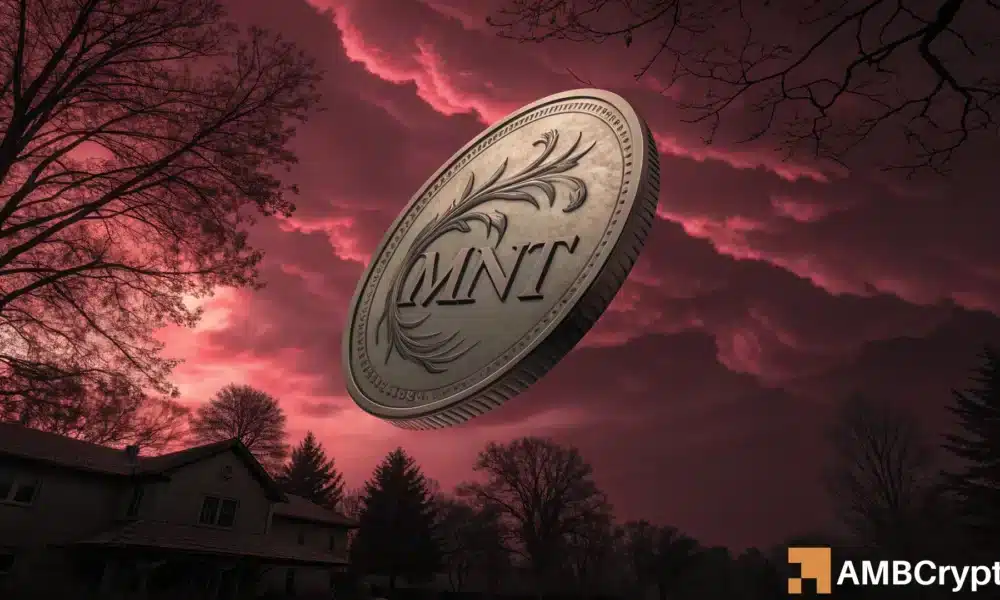Mantle’s Market Trends: Analyzing Recent Declines and Derivative Performance
The cryptocurrency market is as volatile as ever, and Mantle (MNT) recently faced a significant setback, dropping 8.45% to $1.14. This decline occurred against a backdrop of contrasting on-chain and derivatives metrics. While daily active addresses and transaction volumes plummeted, derivatives traders seem undeterred, favoring long positions. Understanding this dynamic is essential for potential investors and traders as they navigate the current landscape.
Declining On-Chain Activity
Recent data highlights a troubling trend in Mantle’s on-chain activity. Investors appear to be exiting, with daily active addresses falling sharply to about 10,700. Daily transactions have likewise dwindled to approximately 199,300, resulting in an average of only 18.6 transactions per user. Compounding this issue, returning users have also declined to 9,900. This suggests a concerning trend where once users complete their transactions, the probability of their return decreases significantly. Such statistics indicate a waning interest in MNT and have contributed to the asset’s price decline, as diminished on-chain activity typically signals reduced demand.
The Resilience of Derivatives Traders
Contrary to the bearish on-chain metrics, derivatives traders are exhibiting a bullish sentiment. Recent figures reveal that 68.9% of the trading volume in the derivatives market consists of long positions. Additionally, the aggregated Funding Rate has turned positive at 0.0078%, indicating that long traders are willing to pay a premium to maintain their positions. This sentiment often reveals a market that favors upward movements, providing some optimism for Mantle despite its recent price slump. If these bullish traders can maintain their momentum, MNT may have the potential for recovery in the near future.
Heatmap Insights: Two Scenarios for MNT
Examining temperature dynamics through CoinGlass’s heatmap reveals possible scenarios for MNT’s trajectory. One scenario suggests that Mantle may experience a bearish dip before a rebound. This indicates the importance of monitoring liquidity clusters below the current price, as filling these could transition those levels into demand zones. However, the heatmap also indicates a potential for an upward rally, contingent upon MNT clearing the liquidity clusters above its current valuation. Nevertheless, it is critical to acknowledge that downside risks still exist, as unfilled clusters below the current price might lead to further declines.
The Impact of Market Sentiment
The contrasting behaviors of on-chain users and derivatives traders highlight a unique characteristic of crypto markets: sentiment. While on-chain metrics signal bearishness, the optimism from derivatives traders indicates a potential disconnect. Despite the diminishing active users and transactions, the persistent addition of long positions may reflect confidence in a rebound. Traders should recognize the significance of sentiment, as it can often drive market behavior, sometimes divorced from fundamental metrics.
Future Trends and Considerations
As Mantle navigates this multifaceted market landscape, stakeholders should remain vigilant. Potential investors ought to look at both on-chain and derivatives data to gauge overall market sentiment. The current situation serves as a reminder of the complexities associated with cryptocurrency trading, where optimism from one side can clash dramatically with trends on the other.
Conclusion: Preparing for Tomorrow
In conclusion, Mantle’s recent price decline, marked by a drop in on-chain activity yet buoyed by derivative trading, exemplifies the intricate balancing act faced by market participants. The dual trends create a scenario where traders need to be cautious but also alert to potential opportunities for recovery. As the market continues to evolve, ongoing analysis of on-chain metrics, sentiment, and liquidity will be crucial for anyone looking to engage with MNT in the future. By keeping an eye on these indicators, traders can make more informed decisions in this ever-changing landscape.


